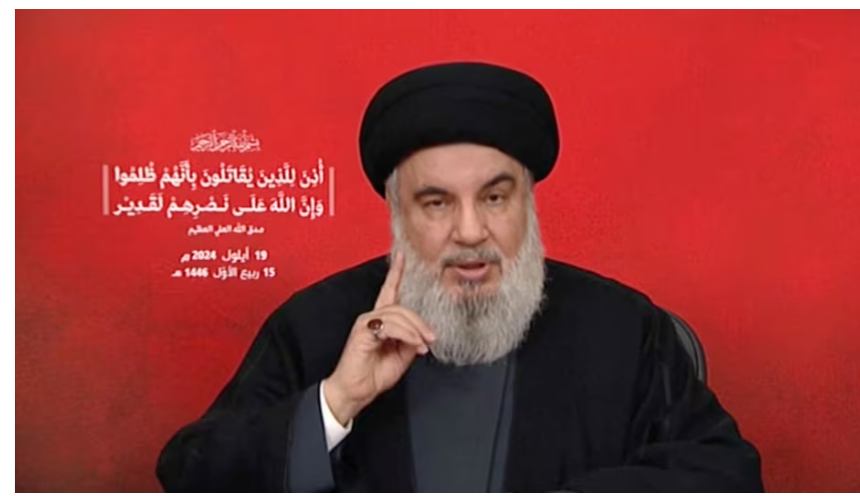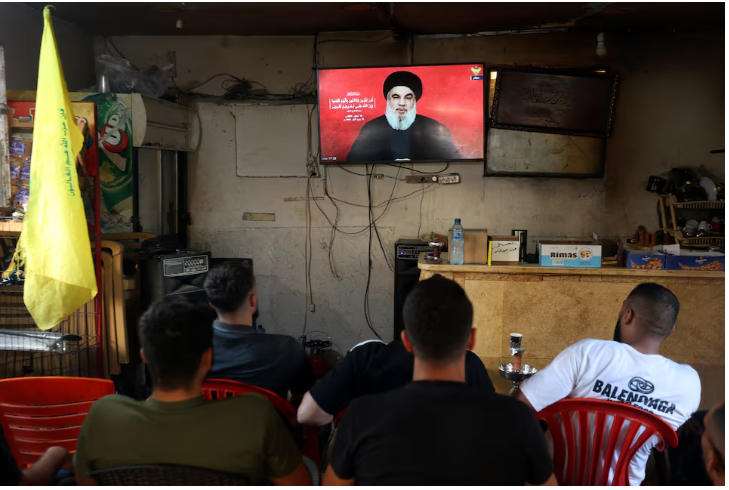Learn how Hassan Nasrallah’s leadership shaped Hezbollah’s rise to regional power, making it a key player in Middle Eastern politics. Focus keywords: Hassan Nasrallah leadership, Hezbollah regional power.
Countering attacks on Hezbollah’s communications network, in a speech on Sept. 19, Nasrallah vowed to punish Israel.
“This is a reckoning that will come, its nature, its size, how and where? This is certainly what we will keep to ourselves and in the narrowest circle even within ourselves,” he said.

He hasn’t given a broadcast address since then.
Meanwhile, Israel has resorted to a spate of massacres dramatically, striking several top Hezbollah commanders and started an enormous bombardment in the territories controlled by Hezbollah in Lebanon, killing hundreds.
“Even his enemies have recognized him as being charismatic in rhetoric,” says Iriye, “and his speeches are followed by friend and foe alike.”.
The Impact of Hassan Nasrallah’s Leadership on Hezbollah’s Growth
An Islamist cleric wearing the black turban of a Sayyed, or descendent of the Prophet Mohammad, he uses his addresses to rally Hezbollah’s base but also to deliver carefully calibrated threats, often wagging his finger as he does so.
He was elected secretary general in 1992 when he was only 35 years old, the public face of a once shadowy group founded by Iran’s Revolutionary Guards in 1982 to fight Israeli occupation forces.
Israel assassinated his predecessor, Sayyed Abbas al-Musawi, in a helicopter attack. Nasrallah headed Hezbollah when its guerrillas finally expelled Israeli forces from southern Lebanon in 2000, ending an 18-year occupation.
‘DIVINE VICTORY’
War with Israel dominated most of his rule. He declared “Divine Victory” in 2006 after Hezbollah waged 34 days of war with Israel, gaining the respect of many ordinary Arabs who had grown up watching Israel defeat their armies.
But he was increasingly a polarizing figure in Lebanon and the Arab world as the Hezbollah zone of operation expanded not just into Syria but beyond-to reflect an increasingly hot war between Shi’ite Iran and U.S.-aligned Sunni Arab monarchies in the Gulf.
He also said that the role the Shia group played in Syria, where it was supporting the Bashar al-Assad regime during the civil war, was also a crusade against jihadists, though critics called the group entangled in a regional sectarian conflict.
Long-time domestic critics had long said Hezbollah’s regional adventurism had imposed an unbearable price on Lebanon, even forcing erstwhile Gulf Arab friends to spurn the country-an issue that partly helped spur its 2019 financial collapse.
In the years after the war, Nasrallah had been tiptoeing over the edge of a new conflict with Israel, hoarding Iranian rockets to form a deterrent “balance of terror” in a carefully measured contest of threat and counter-threat.
Fighting between Hezbollah and Israel spilled over into what has become their worst conflict since 2006, fueling the Gaza war, after Hamas’s Oct. 7 attack on Israel.
The battle brought their long-simmering struggle back into the spotlight as entanglements elsewhere dragged on for years.
“We are paying the price for our support for Gaza and for the Palestinian people, and for adopting the Palestinian cause,” Nasrallah said in the Aug. 1 speech.
Nasrallah grew up in Beirut’s impoverished Karantina district. His family hail from Bazourieh, a village in Lebanon’s predominantly Shi’ite south which today forms Hezbollah’s political heartland.
He is one of the scores of young Lebanese Shiites whose politics was schooled by Iran’s 1979 Islamic Revolution.
He spent his nights with frontline guerrillas fighting Israel’s occupation army. His teenage son Hadi was killed in battle in 1997 and has lent his candidacy added legitimacy among his core Shi’ite constituency in Lebanon.

POWERFUL FOES
He has a long history of browbeating powerful foes.
As relations between the two regions continued to deteriorate following the eruption of the Gaza war, Nasrallah delivered an indirect message to the U.S. warships stationed in the Mediterranean: “We have prepared for the fleets with which you threaten us.”
In early 2020, Nasrallah had warned that U.S. forces would be taken back home in coffins after the Iranian General Qassem Soleimani was assassinated through a U.S. drone strike in Iraq.
He strongly denounced Saudi Arabia for its military campaign against Yemen where, with the assistance of U.S. and other coalition armies, Riyadh sought to roll back the gains of the Iran-backed Houthis.
And as tensions brewed in the region last year after an attack on Saudi oil facilities, he said Saudi Arabia and the United Arab Emirates should pull out of the Yemen war because they gave themselves protection.
“Don’t wager on war with Iran because they’ll destroy you,” he said in a message targeted at Riyadh.
Under Nasrallah, Hezbollah has also fought enemies in Lebanon.
You May Like To Read: Hezbollah conflict with Israel: Israel’s Northern Border Conflict Intensifies
2008: Hezbollah charged that the Lebanese government, at the time supported by the West and Saudi Arabia, was declaring war in an effort to outlaw his group’s internal communications network. Nasrallah vowed to “cut off the hand” that tried to dismantle it.
It led to four days of civil war pitting Hezbollah against Sunni and Druze fighters, and the Shi’ite group to take over half of the capital Beirut.
He cleared Hezbollah of the 2005 killing of former Prime Minister Rafik al-Hariri in a verdict delivered after a U.N.-backed tribunal indicted four Hezbollah members.
The long time served Nasrallah describes the tribunal as being used by Hezbollah’s enemies, one that finally handed down absentia murder convictions for three of them in 2020.
